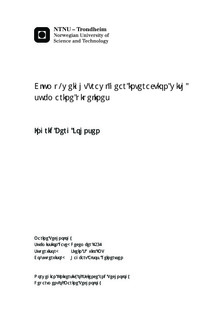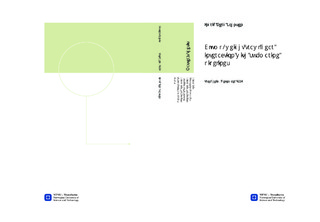| dc.description.abstract | Clump weights come in several shapes, with a mass generally between 2 to 9 tons [5]. With extensive oshore development in the last decades, vast networks of pipelines are installed on the sea bottom. With both pipeline extension and trawl equipment development in mind, the need for designing pipelines able to resist forces from trawl gear interaction have emerged. A recommended practice for pipeline design, DNV-RP-F111, was established by DNV. In this master thesis, a brief introduction to trawl gear and recommended practices are given. The main objective of the master thesis is to reproduce model tests numerically and analyse the response from clump weight over-trawling pipelines. Evidence is sought to establish and dierentiate between the importance of various parameters, e.g free span height, pipeline diameter, and pipe end conditions. Several sensitivity studies were performed, with alterations in several parameters, e.g warp line angle alteration and clump weight wobbling. A full scale pipeline model was also analysed, investigating eects of exibility in pipelines and comparing the results with design loads. All analyses are performed in SIMLA, a special purpose non-linear nite element program. A general description of non-linear nite element method is included in the report. All input values used to model the dierent cases are presented in the master thesis. A good correspondence linking model test results and reproduced simulated models were generally achieved, with some deviations. The deviations are primarily found for low free spans, indicating that this discrepancy can be reduced by further development of the numerical model, e.g by introducing friction to the model. For the full scale pipeline model, design loads are evidently higher than vii viii the pull over force from the corresponding full scale simulation. When comparing design loads with pull over forces from simulated experimental test models, they are more closely related. For small diameter pipelines, a simulation in a full scale model, compared to the rigid model simulations, reduce the pull over forces signicantly. Sensitivity simulations indicate a connection between free span height, pipeline diameter and pull over force. For high free spans, the simulated pull over force increase with decreasing pipe diameter. For low free spans, the simulated pull over force decrease when decreasing the pipe diameter. Clump weight wobbling have in the master thesis been shown to reduce the pull over force. This is seen in the sensitivity analyses performed. Changing clump weight geometry can lead to signicant changes in results. An alteration of the warp line bracket was performed, extending the bracket with 4 cm. The eect was an reduction in the pull over force by approximately 10%, in all cases. A change in warp line angle was also performed, by increasing and then decreasing the angle with 20%. The eect was an reduction in pull over force by 10% and an increase in pull over force by approximately 10%, respectively. For further details regarding the results, see chapter 5. | nb_NO |

